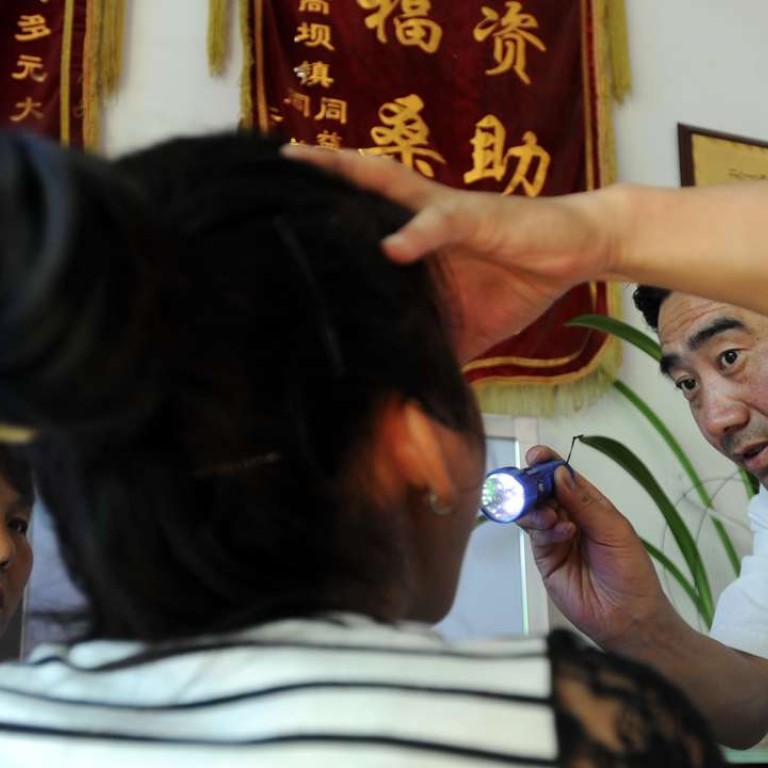
China’s medical reform a healthy dose for private health-care suppliers
Nationwide push for family doctor system brightens prospects for independent providers of medical and information management services
The introduction of a family doctor system on the mainland is expected to provide huge opportunities for independent institutions offering medical and information management services.
Last week, the government unveiled guidelines to extend the family doctor system nationwide, expecting every household to have a contracted family doctor by 2020.
A pilot scheme will be launched this year, with 200 public hospitals signing up households in their community for family doctor services.
The aim of the scheme is to alleviate the bottlenecks at big hospitals in urban areas where patients even with minor ailments would rush to for treatment. This is despite having to queue for hours before they are treated.
Chinese government hospitals are organised under different grades and levels, with 3A city hospitals the most popular because they are bigger and have better facilities, doctors and nurses. Only 4 per cent of the 25,860 hospitals were rated 3A in 2014, according to data from the National Health and Family Planning Commission.
Currently, the problem in promoting the system is that patients do not trust doctors at rural hospitals
The guidelines showed the government was pushing medical reform at a much quicker pace than expected, Essence Securities wrote in a note.
Sun Yuanyuan, an analyst at Industrial Securities, said third party providers of medical examination services would benefit the most from the reform.
“Currently, the problem in promoting the system is that patients do not trust doctors at rural hospitals. They worry that these hospitals are incapable of providing all the medical services,” Sun said. “Thus, we see business opportunities.”
The mainland medical system is also facing a huge problem over the location of hospitals.
3A hospitals in big cities enjoy government support and have sufficient funds, better doctors, a wide supply of drugs and advance equipment, encouraging patients to seek treatment there.
On the other hand, lower level hospitals have less resources and fewer patients.
However, Sun said the demand for medical services came mostly from the rural areas where more smaller hospitals were located.
Family doctors normally treat individual ailments and provide regular check-up services to pregnant women, disabled and those with chronic diseases such as high blood pressure.
Sun said independent institutions offering medical services could find opportunities in cooperating with smaller rural hospitals which lacked advance equipment.
With a limited budget, small hospitals are hesitant in procuring expensive equipment for fear of low usage. They are more likely to outsource the medical examination business to third parties, Sealand Securities said in a research report.
The market for independent medical examination services on the mainland has been growing at a compound annual rate of 54 per cent from 2010 to 2014, with revenue reaching 4.76 billion yuan (HK$5.62 billion).
However, that figure represented only 2.5 per cent of the domestic market, Sun wrote in a report.
In the United States, private examination service providers controlled a 35 per cent market share, the report said.
If the policy of family doctors came into force, more households would visit nearby testing centres, which would send data directly to the doctors, Sun said.
Analysts also see increasing demand for services related to medical information management.
The biggest obstacle to the family doctor system would be the acute shortage of doctors, Huatai Securities said in a report.
There are 189,000 general practitioners in the country but the demand is for 272,100 to 408,200 – based on the assumption that every 10,000 people would need two to three family doctors, Huatai said.
It would take up to 14 years for medical schools to produce enough doctors, the report said.
The lack of doctors means lower level hospitals must work closer with their 3A counterparts to provide the necessary services to patients.
Telemedicine services, such as business-to-business medical platforms and online diagnostics facilities, would also see greater demand in future, Sealand analyst Kong Lingfeng wrote in a research report.
B2B medical services would allow family doctors treating patients suffering from strokes or heart attacks to send data and images directly to bigger hospitals where other doctors could diagnose and recommend action immediately.
China’s hospital scheme is also likely to build up an electronic medical record system allowing doctors in faraway cities to retrieve patients’ records, which would enhance business prospects for technical providers, the report said.
The family doctor system would shake up and rebuild the country’s medical industry if properly developed, Huatai said.

